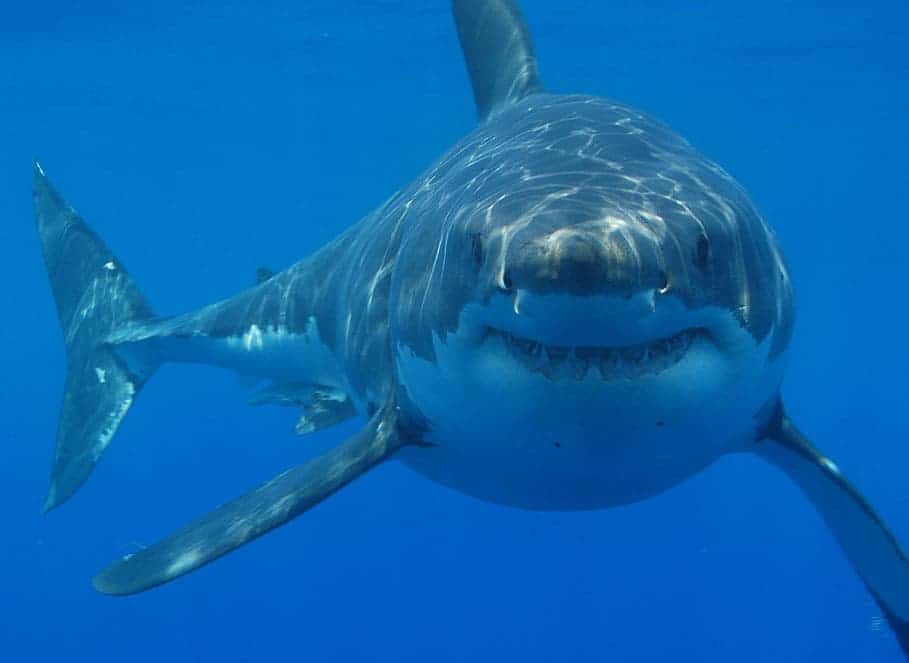
Great whites are some of the most recognizable marine species. Our fascination for these majestic, but also fearsome creatures deepens now that scientists have completed the first genome sequencing of the iconic apex predator.
Scientists sink their teeth in the great white’s genome
The great white’s genome was decoded by an international team of researchers, including those at the Nova Southeastern University’s (NSU) Save Our Seas Foundation Shark Research Center, Guy Harvey Research Institute (GHRI), Cornell University College of Veterinary Medicine, and Monterey Bay Aquarium.
Decoding the white shark genome is providing science with a new set of keys to unlock lingering mysteries about these feared and misunderstood predators – why sharks have thrived for some 500 million years, longer than almost any vertebrate on earth” said Dr. Salvador Jorgensen, a Senior Research Scientist at the Monterey Bay Aquarium, who co-authored the study.
According to the results, the great white genome contains one-a-half times more information than the human genome. That was not surprising to learn, given that they have 41 pairs of chromosomes, whereas humans have only 23.
There’s no doubt that great whites (Carcharodon carcharias) have experienced tremendous evolutionary success. They’re found throughout most of the world’s oceans, grow up to half the length of a bus, have more than 300 razor-sharp, triangular teeth arranged in seven rows, can detect a seal from two miles away, and are the top of the food chain. Their only threat is humans, whose overfishing and illegal hunting have caused the great white shark to be listed as a vulnerable species on the IUCN Red List.
Not only can great white grow to a large size, but they also have a long lifespan, easily reaching 70 years in the wild. But, despite their size and lifespan, the predators rarely get cancer. Previously, research had established a linear relationship between an animal’s body size and the incidence of cancer, but the great white seems to be one of those rare exceptions. The new study suggests that this is partly due to the great white’s genome stability — genetic adaptations which help preserve its genome.
Another remarkable feature of great whites is their extraordinary ability to regenerate quickly. Researchers have tracked back this ability to certain genes that are tied to fundamental pathways involved in wound healing, including a key blood clotting gene.
“Not only were there a surprisingly high number of genome stability genes that contained these adaptive changes, but there was also an enrichment of several of these genes, highlighting the importance of this genetic fine-tuning in the white shark,” said Mahmood Shivji, who is the director of NSU’s Save Our Seas Foundation Shark Research Center.
“Genome instability is a very important issue in many serious human diseases; now we find that nature has developed clever strategies to maintain the stability of genomes in these large-bodied, long-lived sharks,” said Shivji. “There’s still tons to be learned from these evolutionary marvels, including information that will potentially be useful to fight cancer and age-related diseases, and improve wound healing treatments in humans, as we uncover how these animals do it.”
Decoding the white shark’s genome is a great breakthrough that will help conserve the species. For instance, the genome data could be used to better assess white population dynamics. The insight gained from the great white’s genome might also lead to novel cancer drugs in the future.
The findings were reported in the journal PNAS.






